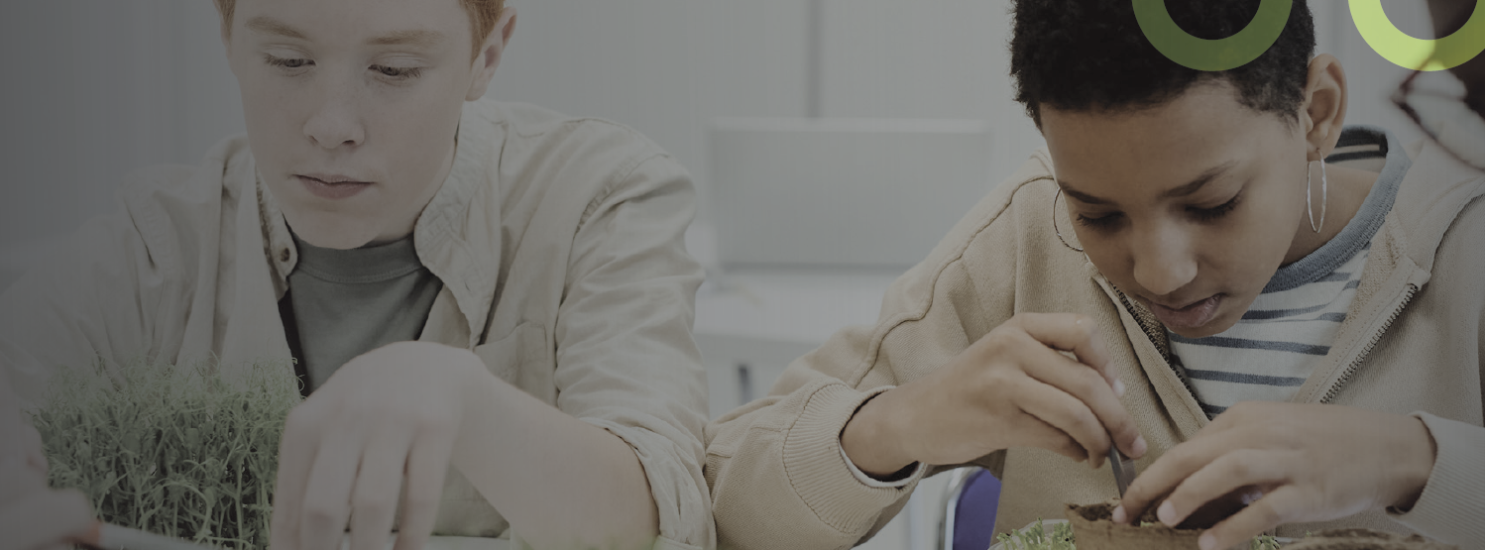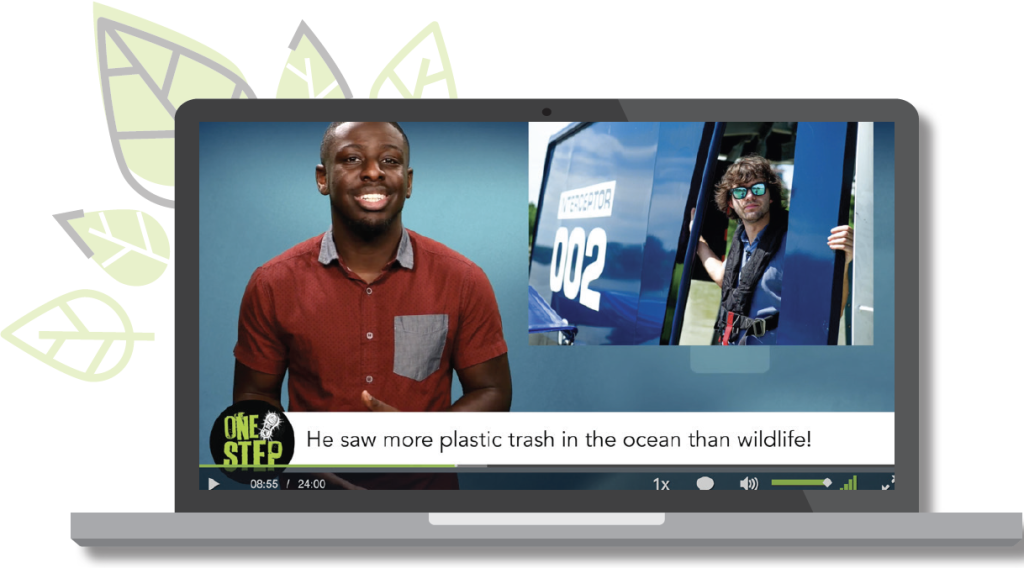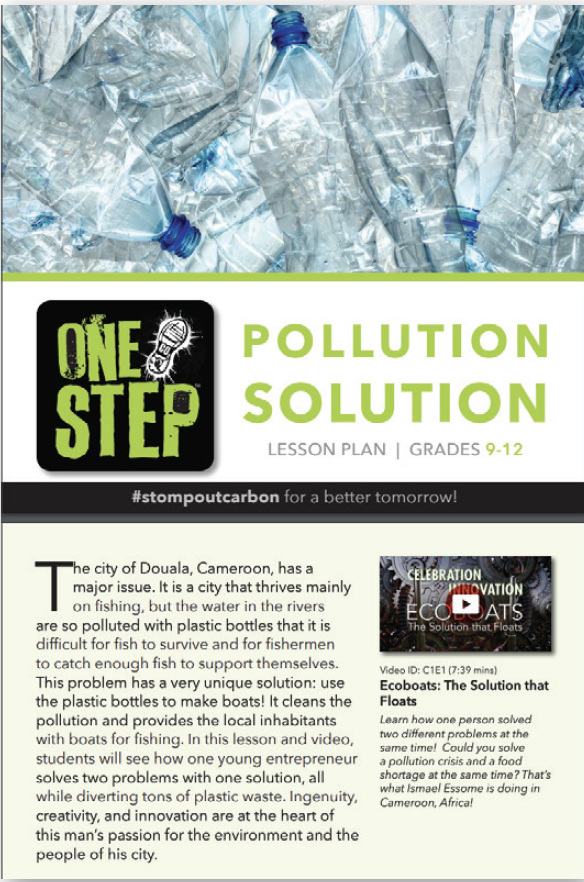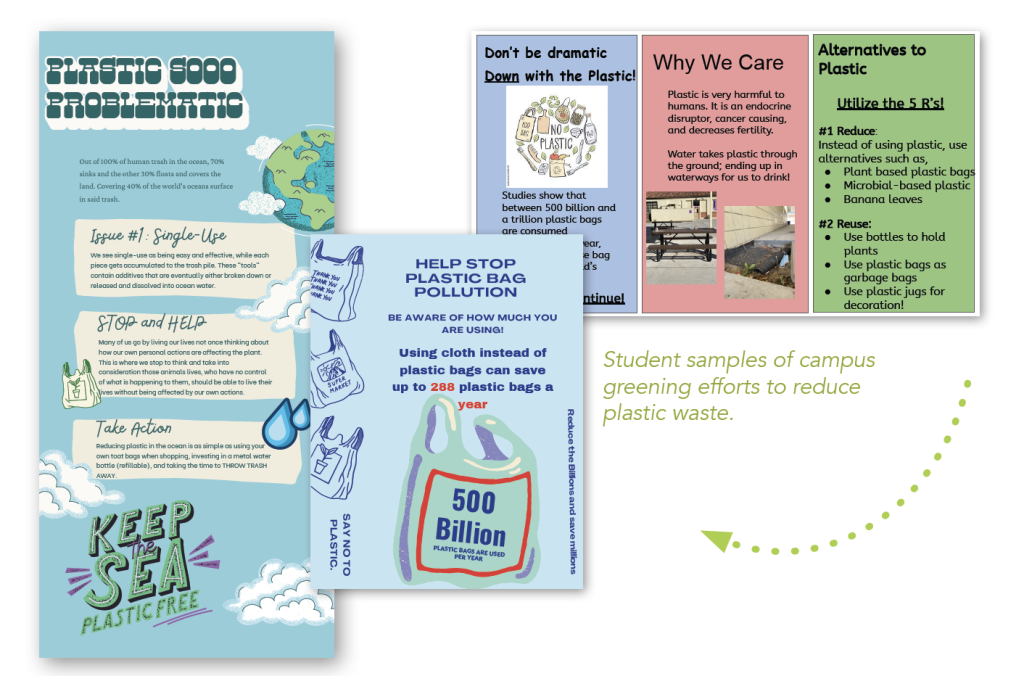
A California high school teacher uses One Step to inspire leadership, excellence, and environmental stewardship from class to campus.
Craig Manges, a high school science teacher in Kings County, California, wants to inspire the students in his AP environmental science classes by discussing the human impacts on the environment and climate science. No stranger to the field, Manges has worked in his position for 13 years and developed the fast-growing AP environmental science class eight years ago. The class that started with an average enrollment of 20 students per year now gets 120–140 students, thanks to Manges’ passion for the subject and the hands-on activities that are a prominent part of the course.
Manges’ teaching style is typically inquiry-based, and he admitted to using shock and awe about our current environmental situation to get students’ attention and to expose them to topics that they otherwise aren’t aware of. “I don’t sugarcoat anything,” he said. “I want them to see the ugliness that’s out there.”
Action-Oriented Teaching Tools Are “A Perfect Fit”
 When Manges first discovered One Step’s climate education curriculum for grades 4–12 he was interested right away. “It’s really easy to teach the gloom and doom. It’s difficult to find the things where the students can answer the question, ‘what can I do?’”
When Manges first discovered One Step’s climate education curriculum for grades 4–12 he was interested right away. “It’s really easy to teach the gloom and doom. It’s difficult to find the things where the students can answer the question, ‘what can I do?’”
“I can make them feel responsible all day long, but if I don’t give them the fractivity then it’s just my words. I’m constantly looking for ways that show action.” When Manges found One Step, he knew it was worth trying out in his AP Environmental Science course.
Supplemental teaching tools and resources that Manges has used prior have been more hypothetical and theoretical, he explained, making One Step a game-changer because it enables his students to really see where, according to him, “the rubber meets the road.”
“It makes a big difference when students can see the action and solutions taking place.”
After previewing the app, activities, projects, videos, and lesson plans available on the One Step website and app, Manges’ biggest regret was that he didn’t get it sooner. “I wish I would have gotten it two months ago,” he exclaimed, mentioning that he could have used the teaching tools during his course units on food production, waste, and water pollution and scarcity. “It’s like somebody read my mind and knew what the pattern was, and what I’m teaching for the next 12 weeks. What [One Step] offers is a perfect fit to what I was doing.”
Inspiring Accountability Across Curricula
One Step was “more than easy to set up” according to Manges. Once the students register for the app, they’re in, making it seamless to continue using the site and tools throughout the rest of the year.
Manges recently presented Plastic Soup in class, a video that discusses the effects of plastic waste in the ocean while also sharing positive solutions. “Students really seemed to ‘get it,’” Manges shared because the video shows students how they could make a real difference.
“It was almost as if they could finally really put their fingers on it, and see how much waste could be removed. They actually saw it work, in real life,” he said, adding that by having a solution presented to them, their interest was further piqued and they were inspired to take more accountability.
Manges also sees a lot of opportunity at his school for using One Step across the curricula, adding that they have already formed teams at the school that require students to have mastery in multiple subject areas. “You could have social science classes looking at the legislative history and how to draft new environmental legislation. You could have the English department actually crafting the proposals, and the math department could do the calculations and complex algebraic formulas,” Manges elaborated. “There definitely could be a very successful multi-discipline aspect using the lessons from One Step.”
Student Leadership and Schoolwide Action
 When asked about his view of climate science and education in K–12 classrooms, Manges offered a strong opinion. “I think it’s one of the most important things we should be teaching. If not for any other reason than preparing this generation and future generations to be able to deal with it. I’m not going to see the 20-foot sea-level rise. It’s not going to happen in my lifetime, but it will in theirs. I want them to know the truth.”
When asked about his view of climate science and education in K–12 classrooms, Manges offered a strong opinion. “I think it’s one of the most important things we should be teaching. If not for any other reason than preparing this generation and future generations to be able to deal with it. I’m not going to see the 20-foot sea-level rise. It’s not going to happen in my lifetime, but it will in theirs. I want them to know the truth.”
Alongside this, Manges hopes to inspire his students to become future leaders, rather than what he refers to as “sheeple.” “Even if they don’t believe me, I want them to be able to have the tools to find the answers. I want them to know how much power they actually have –– they are going to be the ones that will have to solve this.”
After his class watched Plastic Soup and made accompanying greening effort proposals for an assignment, students became excited and empowered to take their proposals further by writing letters to the school board and printing off flyers to post around the school. Rich classroom discussion ensued and even grew into talks about cafeteria waste, quality of food, and nutrition. “I was pretty impressed that this kind of discussion came because they wanted to trace it back to the origin,” Manges said of the continuation of interest that stemmed from a single One Step video.
Manges also leads the Engineering Pathway and mentioned that a group of these students are working to design a new computer chip with a laser sensor that will sit inside a trash can and speak every time something is thrown into it. Manges says that for all of his students the activism portion comes organically through the course content and awareness. “It wasn’t something that I pushed on them,” adding that once students see themselves in a leadership role, they feel a larger responsibility to do something about it.
“Students are hoping that [the micro-chip] will encourage more students to use the correct receptacles rather than just ‘missing’ the recycling bin and moving on,” Manges shared. “There’s almost a game component to it if we’re cleaning up the campus and being rewarded with funny sayings. You know, whatever works!”

Teaching Students to Become Agents of Change
In working to try and get students to relate to the climate crisis, teachers like Manges hope to draw their students out of what he refers to as “a bubble” –– exposing them to the dangers of what lies ahead. But in doing so, he’s also working to inspire ownership, stewardship, and action.
“I get them angry sometimes,” he noted. “I want them to know that this is what their future holds. It’s incredibly important.”
Mange’s mantra, posted on his classroom whiteboard, says “You cannot just imagine the change, you have to be the change you want.” Those age-old, proverb-inspired words remind students that through every lesson, activity, and classroom discussion, they are agents of change and hope for the future. And this classroom philosophy paired with One Step’s solution-oriented climate education lessons makes for a perfect pairing, according to Manges. “One Step did give that [already apparent vision] a little more action, and it gave students an outlet to make a change.”
Being two and a half hours from the ocean, Manges says that all of his students have already seen human impacts on the environment in their short lifetimes. “They see what’s washing ashore and notice how they can’t walk on the sand barefoot anymore,” he said. “The students are starting to see things that weren’t there before and they’re questioning it.”
Manges’ course is moving toward the unit on air pollution, and Manges recently utilized One Step’s Too Hot to Handle: Greenhouse Effect lesson plan and related Climate Talk video. Although he has lots of activities already planned for the unit, he liked having access to additional resources. “One Step seems to be a really nice fit for both extension activities and also for differentiated instruction because not all students learn the same way,” adding that some students need other methods or modalities.
In the future, Manges hopes to incorporate more of the One Step activities and lesson plans into his current curriculum, like the carbon tracker when he teaches his unit on human-caused changes to the climate. Manges can see implementing the carbon tracker at the beginning of the year, allowing students to both track and slowly make small but impactful changes to their current footprint.
All in all, Manges said that he is impressed with how well One Step was designed and appreciates the diverse portfolio of topics and lesson plans. “I think it’s a homerun.”



